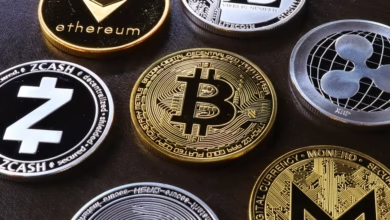Navigating Gold ETFs: Understanding the Role of Physical Gold in Today’s Investment Landscape

In a world of fluctuating economies and uncertain financial environments, gold has long been regarded as a safe haven asset, providing a reliable store of value. As investors seek to navigate the complexities of the gold market, gold exchange-traded funds (ETFs) have emerged as a popular choice for those looking to capitalize on gold prices without the hassle of physical ownership. These investment vehicles are backed by physical gold, making them a compelling option amid global market trends and rising inflation. In this article, we will explore the dynamics of gold ETFs, including their role in today's gold market, the influence of gold prices and market trends on investment strategies, and the connection between gold futures and the physical gold that underpins these financial instruments. Whether you’re a seasoned gold investor or just starting to explore gold coins and collectibles, understanding the landscape of gold ETFs will equip you with the knowledge needed to make informed decisions in your gold investment journey.
- 1. Understanding Gold ETFs: A Safe Haven Asset in Today's Gold Market
- 2. The Impact of Gold Prices and Market Trends on Gold ETFs and Investments
- 3. Exploring Gold Futures: How Physical Gold Drives the Gold ETFs Landscape
1. Understanding Gold ETFs: A Safe Haven Asset in Today's Gold Market
In today's unpredictable economic climate, understanding Gold ETFs is essential for investors seeking a safe haven asset. Gold ETFs, or exchange-traded funds backed by physical gold, provide a convenient way for individuals to invest in gold without the need to own physical gold directly. This investment vehicle is particularly appealing as it allows investors to gain exposure to gold prices while enjoying the liquidity of stock trading.
Gold has long been recognized as a reliable store of value and a hedge against inflation. As central banks continue to accumulate gold reserves, the global gold demand remains robust, reflecting a widespread belief in its long-term stability. The current gold market trends indicate a potential upward trajectory in gold prices, driven by factors such as economic uncertainty, geopolitical tensions, and fluctuating currency values.
For investors considering gold as part of their portfolio, Gold ETFs can be an effective way to diversify and protect against market volatility. Unlike gold coins investing or owning gold jewelry, which may require additional considerations such as storage and security, Gold ETFs offer a more straightforward approach. These funds are often backed by gold bullion or gold bars held in secure vaults, ensuring that investors' holdings are protected.
Additionally, the rise of sustainable gold mining practices has become increasingly important as consumers demand ethically sourced gold. This trend not only supports responsible investment but also aligns with the growing interest in environmental, social, and governance (ESG) principles. Moreover, the integration of gold technology in refining processes has improved efficiency and reduced the impact of gold production on the environment.
While the allure of gold and cryptocurrency has attracted some investors, traditional gold investments, including Gold ETFs, remain a time-tested option. As the gold market analysis reveals, the interplay of gold and inflation continues to drive interest in this precious metal. With the potential for price appreciation, driven by factors such as gold smuggling, global trade dynamics, and luxury gold consumption, Gold ETFs present an attractive opportunity for both seasoned and novice investors.
In conclusion, Gold ETFs represent a strategic choice for those looking to invest in gold without the complexities of physical ownership. As the gold market evolves, staying informed about gold market trends and understanding the nuances of gold investment can empower investors to make sound financial decisions.
2. The Impact of Gold Prices and Market Trends on Gold ETFs and Investments
The performance of gold ETFs is intricately linked to gold prices and prevailing market trends. As a safe haven asset, gold often sees increased demand during periods of economic uncertainty or inflation. Investors typically flock to gold as a reliable store of value when fears about currency depreciation or geopolitical instability arise. Consequently, fluctuations in gold prices directly affect the value of gold ETFs, which are designed to track the price of physical gold.
Understanding gold market trends is crucial for investors considering gold investments. For instance, a rise in gold prices can lead to higher returns for those holding gold ETFs, especially when gold production is constrained due to factors such as mining regulations or reduced global gold demand. In contrast, if gold prices decline, the value of these ETFs may suffer, impacting investor sentiment and leading to increased volatility in the gold market.
Central banks play a significant role in influencing gold prices through their gold reserves. When central banks increase their gold holdings, it often signals confidence in gold as a long-term investment, promoting further demand and potentially driving prices higher. Conversely, when they sell off reserves, it can lead to a decline in prices, impacting the attractiveness of gold ETFs and other gold-related investments.
Market analysis is also essential in assessing the viability of gold investments. Factors like gold futures, gold refining processes, and the impact of luxury gold demand can influence overall market dynamics. Additionally, advancements in gold technology and sustainable gold mining practices are increasingly important as investors become more conscious of ethical sourcing.
Another emerging trend is the relationship between gold and cryptocurrency. As digital currencies gain traction, some investors are exploring the balance between traditional gold investments and digital assets. This evolving landscape presents both opportunities and challenges for gold ETFs, as investors weigh the benefits of physical gold against the allure of cryptocurrency volatility.
In summary, gold prices and market trends significantly impact gold ETFs and investments. By staying attuned to these dynamics, investors can make informed decisions, whether they’re interested in gold bullion, gold coins investing, or exploring the broader gold trade landscape.
3. Exploring Gold Futures: How Physical Gold Drives the Gold ETFs Landscape
In the realm of gold investment, gold ETFs (Exchange-Traded Funds) have become increasingly popular as they offer investors a convenient way to gain exposure to physical gold without the need for storage or security concerns. Understanding how physical gold drives the gold ETFs landscape is crucial for investors looking to navigate the complexities of the gold market trends.
Gold futures are financial contracts that obligate the buyer to purchase, and the seller to sell, a specific amount of gold at a predetermined price on a future date. These contracts play a pivotal role in establishing gold prices in the market, as they reflect the expectations of traders regarding future gold demand and supply. As a safe haven asset, gold often sees increased interest during periods of economic uncertainty or inflation, leading to fluctuations in gold prices that directly affect gold ETFs.
The relationship between physical gold and gold ETFs is rooted in the backing of these funds by actual gold reserves. Many gold ETFs are structured to hold physical gold bullion, which is sourced from gold mining operations, gold recycling initiatives, and even gold smuggling channels that provide a constant flow of the precious metal into the market. This tangible backing gives investors confidence that their investment is secure and tied to the actual gold trade.
Moreover, the performance of gold ETFs is closely monitored by central banks and institutional investors, who often hold significant gold reserves as part of their monetary policy strategies. As global gold demand fluctuates, influenced by factors such as geopolitical tensions or shifts in currency stability, the dynamics of gold production and gold refining become crucial. Sustainable gold mining practices are gaining traction as investors increasingly prioritize responsible sourcing alongside profitability.
Additionally, the rising popularity of gold collectibles and luxury gold items, such as gold jewelry and gold coins, introduces another layer of complexity to the gold market analysis. These items often appreciate in value, further influencing global gold demand and presenting alternative investment opportunities alongside traditional gold ETFs.
With the advent of gold and cryptocurrency, new investment avenues are emerging, offering investors diverse options in the bullion market. However, it remains essential to recognize that while gold ETFs provide liquidity and ease of trading, they are ultimately connected to the physical gold market. Understanding the interplay between gold futures and physical gold helps investors make informed decisions about their gold investments, ensuring they are well-positioned to capitalize on changes in gold prices and market trends.
In conclusion, the gold ETFs landscape is intricately tied to the dynamics of physical gold, with gold futures acting as a crucial indicator of market sentiment. As investors continue to seek the stability offered by gold as a safe haven asset, comprehending these relationships will be vital for successful investment strategies in the evolving gold market.
In conclusion, Gold ETFs represent a compelling investment opportunity for those seeking a safe haven asset in today's fluctuating financial landscape. As we have explored, understanding the dynamics of the gold market is crucial for making informed decisions. The interplay between gold prices and market trends significantly influences the performance of gold ETFs, making it essential for investors to stay abreast of these factors.
Moreover, the relationship between physical gold and gold futures illuminates how these financial instruments operate within the broader gold market, underpinned by gold reserves and the ongoing demand for gold in various forms, including jewelry and technology. As global gold demand continues to rise, so too does the importance of sustainable gold mining practices and the complexities of gold recycling in meeting this demand responsibly.
As investors consider the benefits of gold ETFs, they should also be aware of potential risks, including the impact of inflation and the evolving relationship between gold and cryptocurrency. By integrating gold coins and collectibles into their portfolios, investors can further diversify and enhance their gold investment strategies, capitalizing on the enduring allure of gold as a symbol of wealth and stability.
Ultimately, whether driven by luxury gold items or the intrinsic value of gold bullion, the gold trade remains a significant player in the financial markets. By staying informed and conducting thorough gold market analysis, investors can navigate the complexities of gold production, refining, and trading, ensuring their investments are aligned with their financial goals and market realities.





